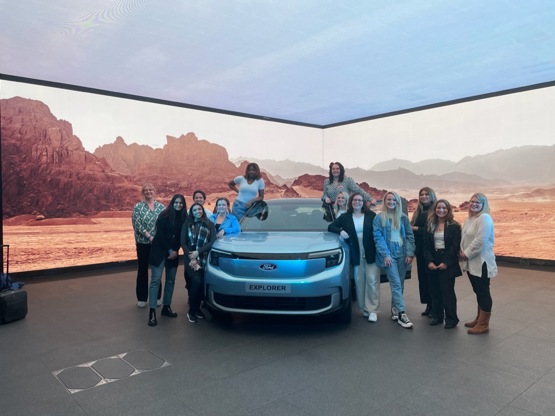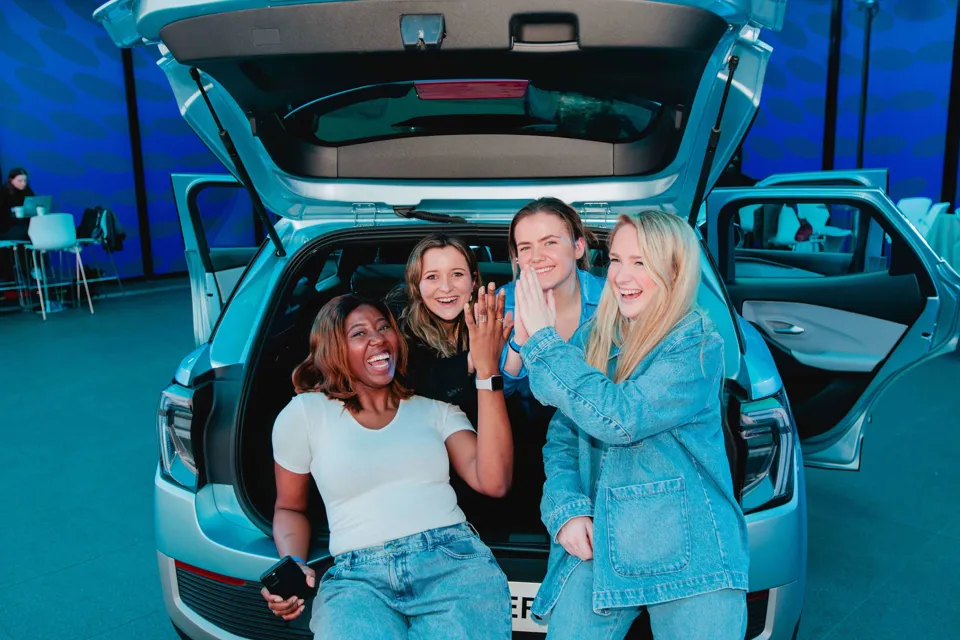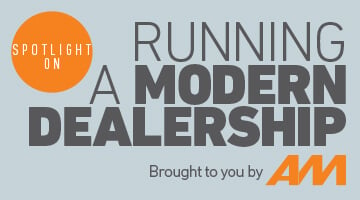By 2030 women could make up the majority of drivers on the road and within the next decade could be the majority purchasers, according to Auto Trader’s Erin Baker, so how can dealers appeal to them?
Change is afoot in the car buying landscape. Men, who have long been the main car purchasers (with women having a heavy influence on the decision), could soon find that more women are in the driving seat, writes Sarah Tooze.
Signs of the shift are emerging in both Department for Transport (DfT) vehicle licensing statistics and Driver and Vehicle Licensing Agency (DVLA) driving licence data.
The former shows that over the past 10 years the number of licensed cars registered to women has increased by 16% compared with a 10% increase for men.
Meanwhile, women are getting their driving licence at a faster rate than men, according to a Freedom of Information (FOI) request to the DVLA carried out by Auto Trader last year.
Almost half (48%) of the estimated 35 million driving licences in the UK are owned by women.
These statistics, coupled with societal changes such as more women being independent (either by getting divorced or by not getting married in the first place) and having more disposable income, have led Erin Baker, editorial director at Auto Trader, to predict that “it’s entirely possible that by 2030 the majority of drivers on our roads will be female and that they could be the majority purchasers within the next 10 years”.
But the well-known problem for car manufacturers and dealers is that women don’t tend to have a good experience buying a car. That needs to change, and research shows many women (and men) need educating about electric vehicles (EVs) too.
How women feel about electric cars
Women have a number of concerns about switching to electric as they are more “risk aware”, they think electric cars are more expensive to run than their petrol and diesel counterparts, and therefore only a fifth are considering an EV versus a third of men, according to Auto Trader’s latest research.
Ford is one car maker paying close attention to the findings. It teamed up with Baker last year to run a Women Drive Electric event, giving female content creators the chance to test drive the Mustang Mach-E, and repeated the exercise again last week by unveiling the all-electric Explorer to a select group of women, ahead of its global reveal last week.
 The all-electric Explorer is a mid-size crossover, which is expected to be priced below £40,000 (excluding OTR cost) when order books open later this year, with first deliveries in early 2024.
The all-electric Explorer is a mid-size crossover, which is expected to be priced below £40,000 (excluding OTR cost) when order books open later this year, with first deliveries in early 2024.
Catherine Blee, head of passenger vehicles at Ford, is confident that from full-scale 2024 production and sales volumes lead times will be just two to four weeks.
She expects the Explorer to have broad appeal but highlights how the TV campaign has a strong female story. It focuses on Aloha Wanderwell, who set the record as the first woman to drive around the world between 1922 and 1927- in a Ford Model T. Now Ford is partnering with travel adventurer Lexie Alford (known as Lexie Limitless) for a round-the-world journey in the all-electric Explorer.
During the design phase of the new Explorer the mythical customer was a woman living in the city who liked to escape at the weekends and do outdoor sports.
Bethan Wild, who attended the Women Drive Electric event, encapsulates this. Wild likes paddle boarding and kayaking and most of her summers are spent at the beach.
“I’m always trying to cram things in my car,” she says. “The Explorer is everything I want when I go on my beach journeys.”
And she likes the idea of being the first of her friends to go electric.
Practical features such as the Explorer’s moveable touchscreen, which conceals a storage space for valuables, and a 17-litre console between the front seats, capable of fitting a laptop, appealed to women at the event.
As did the car’s colour (arctic blue), which women described as “unique” and “refreshing”.
Colour is a “trigger” for women car buyers
While the Society of Motor Manufacturers and Traders (SMMT) registration figures repeatedly show grey as the UK’s most popular new car colour, followed by black and white, and there are residual value implications from choosing a bold colour, Baker believes that “women are not afraid to say they chose a car because of the colour”.
“There was an Aston Martin DB11 owner and the primary reason she bought her car was because the paintwork was glittery in the sun,” she says.
Examples like that are good reasons to tailor marketing to women, in Baker’s view.
TrustFord does A/B testing by gender on its marketing campaigns and has found “colour is more of a trigger for females”, according to group marketing manager Sarah Knighting.
Women are still the minority of TrustFord’s customer base - only 7.8% of hybrid and electric vehicle sales and 30% overall, although Knighting says numbers are growing,
“Forty-five per cent of our Facebook audience is female and 29% of that number is aged from 25 to 54 so that’s a real target space for us where we do our A/B testing around the type of ads that we would put out,” she says.
TrustFord’s approach to content is to break down acronyms and avoid confusing language.
“Our ethos is natural, friendly and approachable - that’s how we position everything,” Knighting says.
Making car showrooms more welcoming for women
In keeping with that, TrustFord is transforming its showrooms. Gone are the men in suits and the male-targeted ‘Man from the Factory’ events - replaced by polo shirts, comfy chairs, and freedom for kids to roam around.
 It’s an approach Baker (pictured) applauds, she urges dealers to think about basic things such as the music they play, the furniture and even the fragrance of the showroom.
It’s an approach Baker (pictured) applauds, she urges dealers to think about basic things such as the music they play, the furniture and even the fragrance of the showroom.
Beyond that it’s making sure that female customers see female staff when they walk in.
An AM poll shows that in most cases women make up less than half of dealers’ workforce, with most employing just 11%-20%.
TrustFord is at 25% but as a member of The Automotive 30% Club it is aiming to up that number.
It is also upskilling its staff on EVs with 75% of the estate having done the NFDA's Electric Vehicle Approved (EVA) accreditation scheme.
That’s important because anecdotally Ford has found customers are making more showroom visits before purchasing an EV than they would do with an ICE vehicle.
And if that potential EV buyer is a woman, wouldn’t it be wise to make her visit a positive one?















Login to comment
Comments
No comments have been made yet.